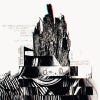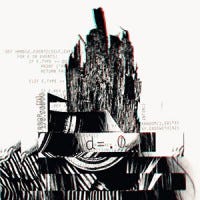Form follows function and the dream logic
If you think about the classical design-axiom of “form follows function” in a game way, the first thing that propably popped up your mind was “what is the function of my game“. To entertain the player?

The Original Article was published on my blog
The old sentence Form follows function is not only an thought that compares physical appearance to actual praxis, but also works in a broader media-centered sense:

Form follows function while function shapes the content. So the content shapes the function and the form: a full circle
In the beginning of the 18th century the german philosopher Christian Wolff reflected wether a text (I will call it content) is shaped by its form. If you have story you could tell it with a poem, with an opera, with an comic, with a movie etc. You could say, he saw form not only as a visual appearance, but more like the underlying rules and structures that formed this appearance. So there is this thought of a form that opposes the content. This is of course a generalisation and there is no such thing as a losless translation between different forms, but one should use this thought anyways because it may lead to interesting insights.
So when I speak of form I don’t mean the what, I mean the how. The therm form is very elastic. We could say the whole art form of interactive games has an inherent form (you are active, you always have to make a decision and even if it is the decision not to press that button), we could also say, each genre has a certain form or each level (if the mechanics and elements of the game differ). If you think about the classical design-axiom of “form follows function” in a game way, the first thing that propably popped up your mind was “what is the function of my game“. To entertain the player?
Don’t think like that. Yes to entertain will be a goal, the goal of the whole game. But if you set your scope closer to the single elements of your game, there might be other functions. Set a mood, to tell something or to let the player experience something. And this something must not only be plain entertainment, but could also be something like making players feel forceless, struggling, stressed, afraid, relaxed, releaved, like a mighty god or a tiny ant. And for me a good game mixes those feelings. Every good director does his movies like that: his first goal is not to make everything entertaining, but to look at every scene, at every single shot and think “how could I tell this, where should the camera be, who should we see, where are they” in order to give that single element a form that expresses what content there is. Watch some Kubrik Movies — he does that all the time. Why not think a little more like that in computergames?
We can express our feelings regarding the world around us either by poetic or by descriptive means. I prefer to express myself metaphorically. Let me stress: metaphorically, not symbolically. A symbol contains within itself a definite meaning, certain intellectual formula, while metaphor is an image. An image possessing the same distinguishing features as the world it represents. An image — as opposed to a symbol — is indefinite in meaning. One cannot speak of the infinite world by applying tools that are definite and finite. We can analyse the formula that constitutes a symbol, while metaphor is a being-within-itself, it’s a monomial. It falls apart at any attempt of touching it.
–Andrei Tarkovsky

Mirror’s Edge: Escape as an inherent conept of egoperspective or just very good controls?
I am familiar with the old ludic vs. narrative-debate. As a filmmaker I take very much from that field I already know, but I dont think of a game (or a film) as a narrative — at least not in the sense of viewing movies as text — a thought that came from literary studies. For me a movie, a song, a game is a medium of experience because it envolves time. Andrei Tarkovsky said, every art form had some built in topic it can serve the best. A strength it has over other art forms, things it can tell better than others. The topic that lies in the form of film itself is the dream. No other art form can get so close to that experience of dreaming. I am not sure what topics in different games could be, but I think escape is a strong one (think of Mirrors Edge), an escape in games is much closer to the real thing than it is in a movie. Maybe this is also due to the good controls and the imersive feel of Proprioception.
Dreams in games are interesting, but they are rarely used and if they are used they often apply cliche soundeffects and blur the picture. What makes a dream feel like a dream is not the bluriness (=visual form), but what and how it happens:
Imagine a egoshooter. You wake up in a room. A gramophone scratches in a everlasting loop. There is a door. You cant move towards it. If you turn away and turn to that door, there is a man standing, silently following you with your eyes. You turn away and back. He is gone. Cut. You are in a totally different place.

The Floorplan from 2001: A Space Odyssey
Wouldn’t that feel like a dream, without applying a single effect? It would. Because the internal logic of what the player experiences mimics the internal logic of a dream. So by imitating the internal logic of an experience while using certain triggers we can summon a certain feeling. An the summoning of that feeling could be our function.
In a book the function of a sententence will influence how the form alters the content. This can not only strengthen or weaken a point, but also add depth, negate it etc. Same goes for games.
But be aware not to overintellectualize it too much — it just won’t work. Don’t copy the cliche metaphors of popular culture (or other games), take a deep breath and listen to the images you own subconciousness brings. And don’t take what I wrote for granted: build your own theories.
Have unique thoughts about your life, about your art, even about your audience. Don’t entertain them — let them be part of the unique art your unique thoughts produce.
Read more about:
BlogsAbout the Author(s)
You May Also Like













